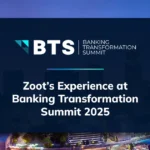Based on a post from August 2017, updated October 2021.
As banks hurtle through the latter half of ’21, digital experiences have become table stakes and the customer experience continues to reign supreme. Yet many financial institutions are finding their tech stacks do not match their corporate goals and their systems cannot efficiently support executive talking points. As an organization that works with the biggest banks in the United States, we often see that when lines of business are siloed, it can be hard to deliver enterprise-wide customer experiences.
Silos: Good for Grain, Bad for Banks
How do silos have such a negative impact? First, they are technically inefficient. Many of the individual systems used by distinct lines of business are not built to communicate with other systems in the financial institution (FI). This disconnected structure prevents the organization from mining important customer insights, resulting in the fragmented, generic experiences that turn customers away.
Silos are also politically isolated and prevent a holistic view of both the FI and the customer. While one LOB has a view of a single customer facet, another LOB may have complementary data that remains unseen in a siloed environment. Without that additional information, LOBs may fail to present the best offer at the best time.
Leading FIs understand that breaking down those silos is key to successful engagements with customers. With a complete view, FIs can more thoroughly understand their customers and deliver the positive experiences modern financial consumers expect.
Connect for Success
So how can banks overcome siloed systems and deliver improvements in their customer experience? By implementing a comprehensive decisioning layer. Our clients use an API connected, data agnostic layer to connect data from any source, centralize their credit and fraud risk policies, implement business rules, and provide real-time adjustments in response to regulatory and market changes.
There’s no better way to ensure seamless omnichannel customer experiences than by taking an enterprise-wide view of customer data that is LOB agnostic, with the ability to share information across individual channels. When this happens, LOBs no longer live in a data desert – each line has a complete view of customer history and behavior. This centralized approach can enable business lines to understand the unique needs of each customer, resulting in more efficient and effective customer touchpoints.
Adopting an enterprise decisioning model also allows for greater transparency and documentation, and helps automate risk control while providing full auditability. Not only do customers get the benefit of a bank that has the full picture of their relationship – they also have an effective solution to manage risk and compliance.
Give Customers What They Want
Today’s customers expect banks to understand their needs no matter their channel, and expect individual LOBs to know about the entirety of their relationship with the bank as well. When an FI has an enterprise decisioning layer in place, they can confidently engage with their customers at any stage in the journey.
Banks that differentiate on customer experience – and specifically a customer experience informed from a central, enterprise decisioning layer – will be those that are most successful in the future.





